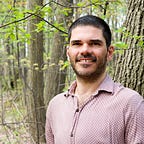Sometimes the narrative comes from real life
A couple of months ago I started a new project at my work at Concordia University, for Project Someone. Project Someone works to build awareness, create spaces for pluralistic dialogues, and combat discrimination and online hate. A collection of educational resources including eight videos on radicalization and extremism were used for a massive open online course (MOOC) and I was asked to adapt them for a different audience.
I wasn’t sure how to go about this until I had a flash of inspiration from the actions of one of my groups of friends. Since the pandemic and the vaccines have been released for use among the public our conversations have naturally turned to the subject. However there is a really big difference in the way that we all talk about it. My approach, being a person from a developing country with little health resources, has been one of ‘data and science rules. Wait for information coming from the WHO and then act.’
It seems that this group do not look at scientific results the same way… For several months they have tried to use various techniques of misinformation to affect and manipulate the conversation. They have used various propaganda techniques to sway my judgment and my reliance on data and science. Some of the techniques members of the group have used include:
- straw man fallacies
- Appeals to fear
- Big lies
- Diktat
- Firehose of falsehood
- Gaslighting
- Glittering generalities
- Information overload
- Red herrings
- Third party and soft power
In turn, I have used many of these techniques to counteract their arguments:
- Ad hominem
- Cult of personality
- Euphemisms
- Half-truths
- Loaded language
- Pensee unique
- Scapegoating
The biggest surprise for me was that the loudest and most consistent person of the group is a researcher and works as a public servant in the health sector! (Insert surprised Pikachu face here.) This did not come as a surprise to me; ‘During the first few months of this health crisis, 96% of Canadians who used the Internet to find information saw COVID-19 information that they suspected was misleading, false or inaccurate.’ And again; ‘Half of Canadians shared COVID-19 information they found online without knowing whether it was accurate’. StatsCan
I decided I would use my friends’ misinformation techniques to add value to the work that I was creating and to help form the content of the lessons. I did this by analysing the idea from several angles, and working to ensure all these would be targeted with learning objectives. These objectives were turned into separate modules that fit together within the lessons. I expand the topic and ask learners to make use of these techniques to create their own marketing campaign.
The learners go through a process of learning about stigmatization; how is it done, what are the steps, how can you use these to manipulate people. They examine the media accounts of the Quebec and Canadian government, as well as social media and look for signs of disinformation on a wide variety of topics. Aspects of digital citizenship are built into the program to ensure the learners have a series of strategies to keep them on the right track while analysing these falsehoods.
Finally, these tactics are turned on their proverbial head, as the learners create a marketing campaign that uses the aspects of stigmatization and misinformation to try and convince their peers that the information is correct.
Here’s a summary of the series which is currently in development and implementation:
Lesson 1 : Explore online propaganda
This lesson explores and defines the online world of hate. It looks at how the media can be used for propaganda, advertising and manipulation. Several researchers talk about using hate as a tool for a certain group of people to use against another group of people.
Lesson 2 : Radicalization — factors and push and pull
The connection between online hate speech and offline behaviour is hard to measure. In this lesson, learners will go deeper into radicalization by examining how it can be caused by a multitude of factors. Some of these factors “push” the person towards radicalization, while others “pull” them into it.
Lesson 3 : Building Digital Citizenship
In this lesson, learners will watch a video on the different techniques hate groups use to stigmatize and radicalize members. They learn a process of how to stigmatize a certain group and branch out to explore a variety of propaganda techniques while contributing to an online collaborative class document. By engaging with the material using critical analysis, learners will identify methods to improve their digital citizenship.
Lesson 4: Social media for resiliency and advocacy
Learners watch videos exploring different perspectives on prevention and resilience and the need for conversations between the groups of people to help understand their perspectives. The notion of freedom of speech for resiliency and advocacy are reinforced through the interview of a journalist giving his perspective.
The final activities require learners to consider the previous lessons as they create a social media marketing campaign around chosen propaganda techniques. They consider a topic and give their own perspective on it while remaining open to feedback on the overall process.
Let me know what you think of this idea. Is it something you could work with in your setting?
